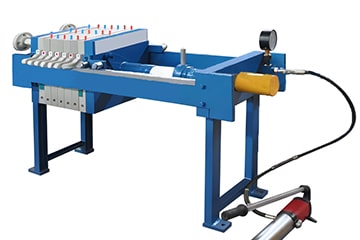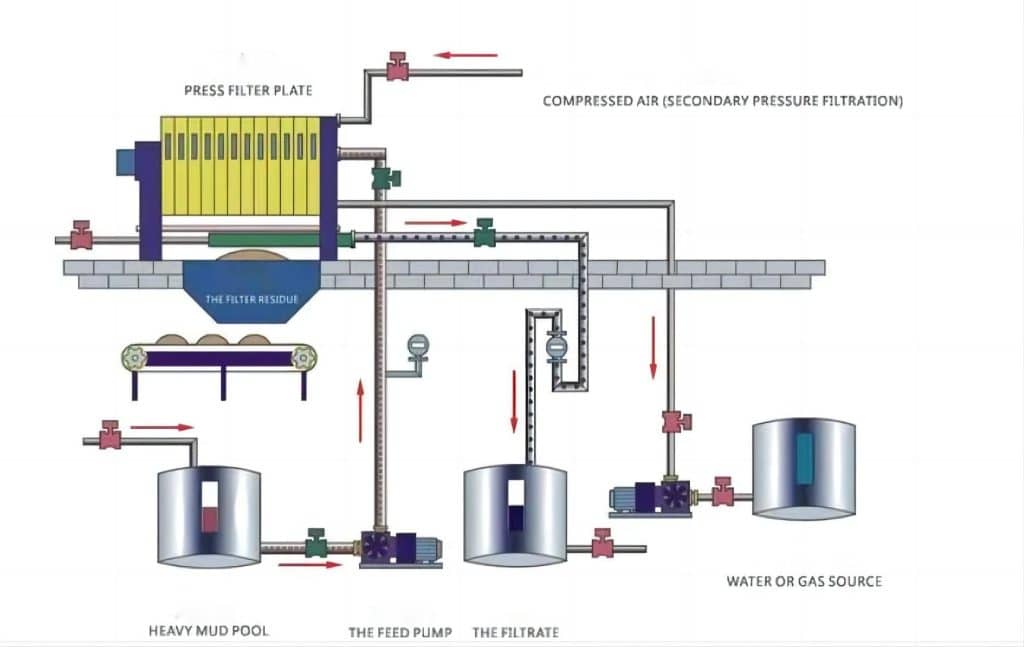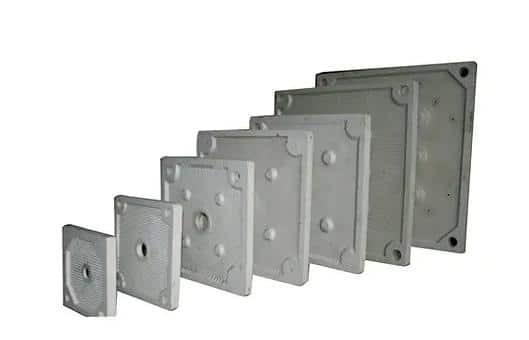A filter press is a common and very effective solid-liquid separation device in industrial and environmental applications. It separates solid particles from liquids by applying pressure to push the mixture through a filter media. However, the performance and efficiency of a filter press depends on several key components, collectively known as Filter Press Parts. Today, we’ll take an in-depth look at these key components and how they affect filter press operation and filtration results.
What is filter press parts?
It refers to various parts and accessories used in filter presses. A filter press is a piece of equipment used for solid-liquid separation, where filtration is achieved by applying pressure to push a mixture through a filter medium (usually a filter cloth or plate).

Importance of Filter Press Components
Each component is relative in importance and is necessary for the filter press to function properly and efficiently. A complete and well-functioning filter press system requires that all of these components work effectively together.
Filter Plates
The filter plate is one of the key components in the filter press, its role is to support the filter cloth or filter media during the solid-liquid separation process, forming a filter channel for the solid-liquid mixture and allowing the liquid to pass through while the solid particles are filtered out. The design of the filter plate affects the filtration efficiency of the filter press, the solids collection, and the ease of cleaning.

Plate Filter Plates
Plate filter plates are one of the most common types of filter plates and are typically used for general solid-liquid separation applications. They have a simple construction and are easy to operate and maintain.

Frame Filter Plate
Framed Filter Plates have a frame around the edge of the plate, making them stronger and able to withstand higher pressures.
Membrane Filter Plate
Membrane Filter Plates are covered with an elastic membrane on the surface of the filter plate, which is used to apply extra pressure during the filtration process to improve the filtration efficiency. It improves the filtration efficiency, reduces the water content of the filter cake, and saves energy.
Honeycomb Filter Plate
The surface of the honeycomb filter plate has several small holes through which filtration is carried out, which increases the filtration area and improves the filtration efficiency.
Squeeze Filter Plate
The extruded filter plate applies pressure through the hydraulic system to make the gap between the filter cloth and the filter plate as small as possible, which improves the filtration efficiency.
Filter Cloths
Filtration Efficiency: The pore size and structure of the filter cloth directly affect the efficiency of solid-liquid separation. A good filter cloth should be able to effectively block the passage of solid particles while allowing the smooth passage of liquids, thus ensuring efficient filtration.
Solids Collection: The filter cloth needs to be able to support the solids particles securely so that they form a solid cake for subsequent collection and disposal.
Durability: Filter cloths need to have good abrasion and chemical resistance to suit the filtration needs of different materials and maintain a long service life.
Cleanability: Good filter cloth should be easy to clean to ensure continuous efficient operation and reduce maintenance costs.
Hydraulic System
Fluid Transmission of Pressure: Hydraulic systems utilize a fluid (usually oil) to transmit pressure in closed pipes. This fluid is incompressible, so it can effectively transmit large amounts of force.
Pressure Generation: The fluid in a hydraulic system is pushed against a hydraulic cylinder or piston by a pressure pump. As the fluid exerts pressure on the cylinder or piston, the resulting pressure pushes the press system, compacting the solid-liquid mixture and allowing the fluid to pass through the filter cloth.
Controlling Pressure: Hydraulic systems typically include valves, controllers, and sensors to regulate and control the magnitude and distribution of pressure to ensure stable operation of the filter press under different operating conditions.
How to maintain the hydraulic system?
- Check the fluid level periodically: Make sure there is enough fluid in the hydraulic tank to avoid hydraulic system failure due to insufficient hydraulic fluid.
- Clean filter elements: Clean or replace filter elements in the hydraulic system to prevent contaminants from entering the hydraulic system and damaging hydraulic components.
- Check seals: Check seals in hydraulic cylinders, valves, and pipes to make sure they are intact and prevent fluid leaks.
- Check pressure: Check hydraulic system pressure to ensure it is within normal limits.
- Clean the hydraulic system: Clean the inside and outside of the hydraulic system to prevent dirt and contaminants from accumulating and affecting the operation of the system.
- Regular maintenance: Perform lubrication and maintenance work, including lubricating the piston of the hydraulic cylinder, cleaning the valves, adjusting the transmission, etc., to ensure the smooth operation of the hydraulic system.
Filter Press Common Failures and Repairs
| Common Failures | Possible Causes | Repair Methods |
| Hydraulic system oil leakage | Worn or damaged seals | Replacement of seals, repair of hydraulic pipes or fittings |
| Insufficient pressure in hydraulic system | Insufficient or contaminated hydraulic fluid | Replenish the hydraulic oil, replace the hydraulic oil filter, and clean or replace the hydraulic oil tank. |
| Hydraulic system leakage | Loose or damaged hydraulic lines | Inspect and tighten hydraulic lines and replace damaged hydraulic lines or fittings. |
| Clogged filter cloth | Contaminated or damaged filter cloth | Clean or replace filter cloths and adjust filtration conditions to avoid clogging. |
| Incomplete filter cake | Insufficient pressure or incorrect operation | Adjust the hydraulic system to increase pressure. |
| Control system failure | Faulty sensors or connection problems | Check the sensor connections and replace the defective sensor. |
Summary
The performance and efficiency of a filter press depends on the good operation and coordination of various key components. From the filter plate to the filter cloth, to the hydraulic system and other accessories, each component plays a key role in influencing the filtration effect and operational stability of the filter press. Therefore, the selection, installation and maintenance of filter press components are critical.
Kuosi, as a leading manufacturer in the water treatment industry, has earned the respect and trust of the industry for its technological innovation, product quality, customer service and commitment to sustainable development. Offering a range of products such as dissolved air flotation system, paddle dryers, aerationblowers, disinfection systems, grit classifier a range of products, please feel free to contact us to serve you!
